
 4 May 1924: At 7:30 a.m., Étienne Edmond Oehmichen (1884–1955), an engineer for Société Anonyme des Automobiles et Cycles Peugeot, flew his four-rotor L’Hélicoptère Nº2 around a triangular closed circuit of approximately 1 kilometer (0.62 mile) at Valentigney, France. The flight took 7 minutes, 40 seconds. It was observed by the public, members of the press and officials of the Service Technique de l’ Aéronautique (S.T.Aé, the French air ministry). For his accomplishment, Oehmichen was awarded a prize of ₣90,000 by the government of France.
4 May 1924: At 7:30 a.m., Étienne Edmond Oehmichen (1884–1955), an engineer for Société Anonyme des Automobiles et Cycles Peugeot, flew his four-rotor L’Hélicoptère Nº2 around a triangular closed circuit of approximately 1 kilometer (0.62 mile) at Valentigney, France. The flight took 7 minutes, 40 seconds. It was observed by the public, members of the press and officials of the Service Technique de l’ Aéronautique (S.T.Aé, the French air ministry). For his accomplishment, Oehmichen was awarded a prize of ₣90,000 by the government of France.
FLIGHT reported:
A Fresh Helicopter Record
M. Oemichen has been continuing his experiments at Valentigny with his helicopter, and on Sunday, May 4, established a record for helicopters by accomplished a flight of more than one kilometre—1,100 yards—in a closed circuit. The flight lasted 7 mins. 40 secs. and during most of the time the machine maintained a height of about 3 feet, but sometimes rose to 10 feet. The flight was officially observed by a representative of the Department of Military Aeronautics. By this performance M. Oemichen wins an award of 90,000 francs given by the French Government.
FLIGHT, The Aircraft Engineer & Airships, No. 802 (No. 19, Vol. XVI.) May 8, 1924, Page 267, Column 1
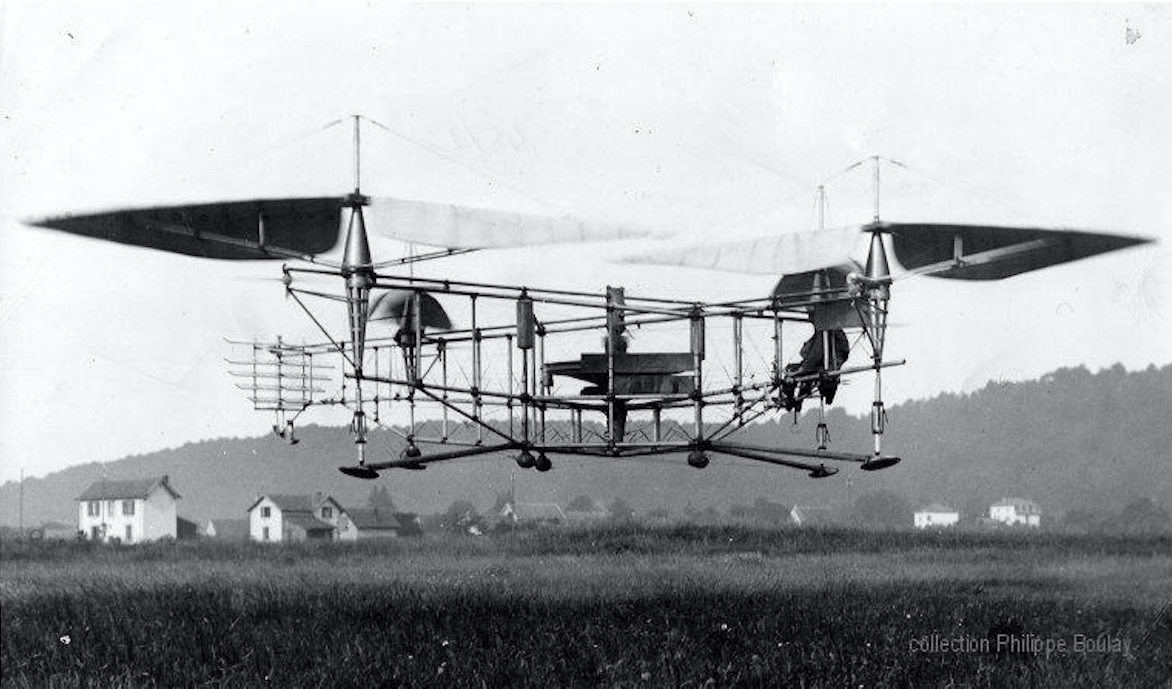
The previous month, Oehmichen had set two FAI world rotorcraft records for distance in a straight line. On 14 April 1924, he flew 360 meters (1,181 feet)¹, and on 17 April, 525 meters (1,722 feet).²
On 14 September 1924, he would set two records for altitude, 1 meter (3.28 feet) with a 100 kilogram (220 pounds) and a 200 kilogram (441 pounds) payload.³
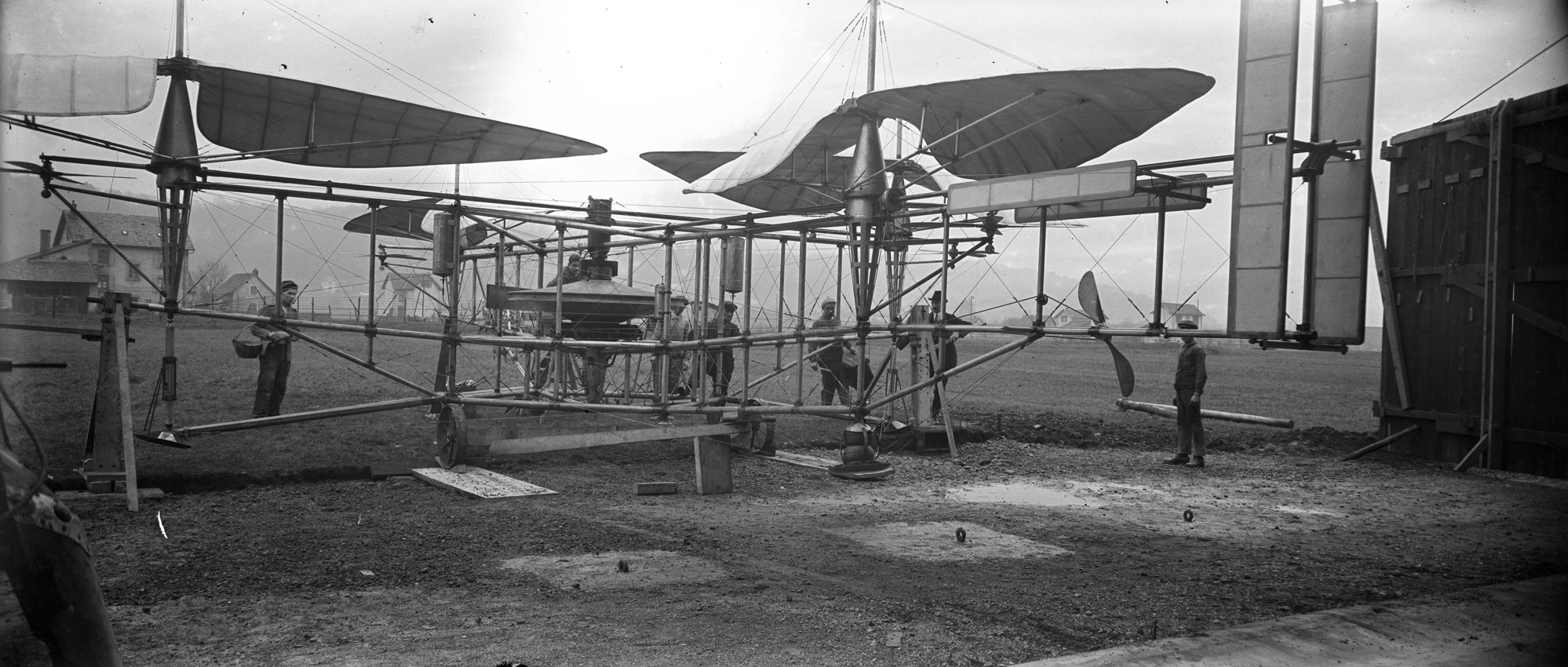
Oehmichen’s helicopter (also referred to by some sources as the Peugeot Nº2) was a cross-shaped structure built of metal tubing. Lift was generated by four two-bladed, counter-rotating, main rotors. Two rotors had a diameter of 6.5 meters (21 feet, 4 inches), and the other two, 7.5 meters (24 feet, 7 inches). They all turned at 145 r.p.m. Blade pitch was controlled by warping.
The helicopter had another five rotors positioned in the horizontal plane. Three had a diameter of 1.45 meters (4 feet, 9 inches), and two, 1.55 meters (5 feet, 1 inch). These had reversible pitch were used to provide lateral control. Two variable-pitch pusher propellers with a diameter of 1.40 meters (4 feet, 7 inches) were positioned on each side of the lateral structure, and were driven by belts. The helicopter was steered by another small rotor at the front.
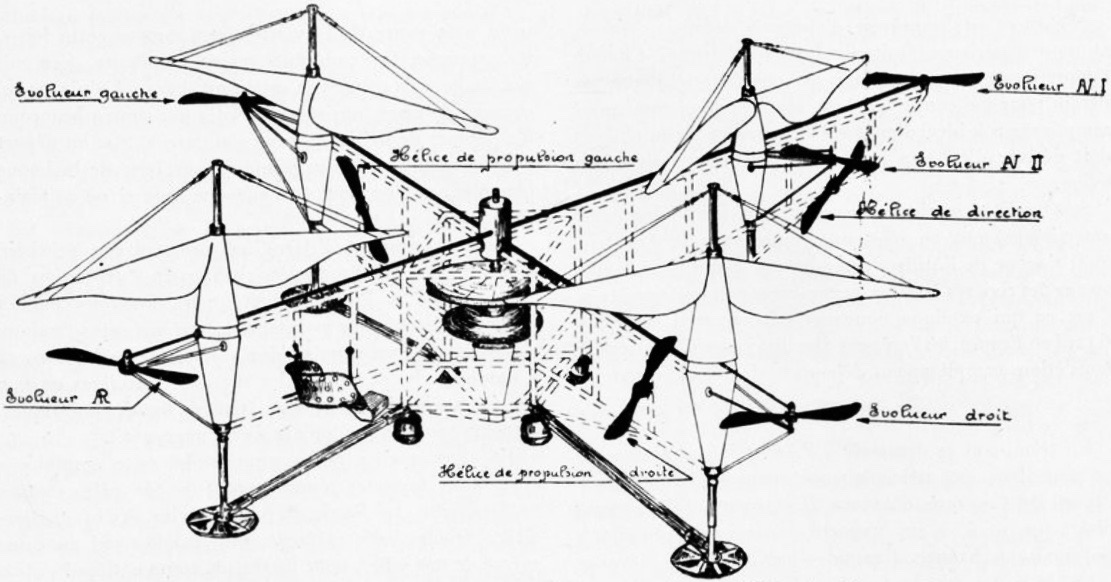
With the helicopter having an operating weight of approximately 1,000 kilograms (2,205 pounds), the rotors had a load factor of 33 kilograms per square meter (6.8 pounds per square foot).
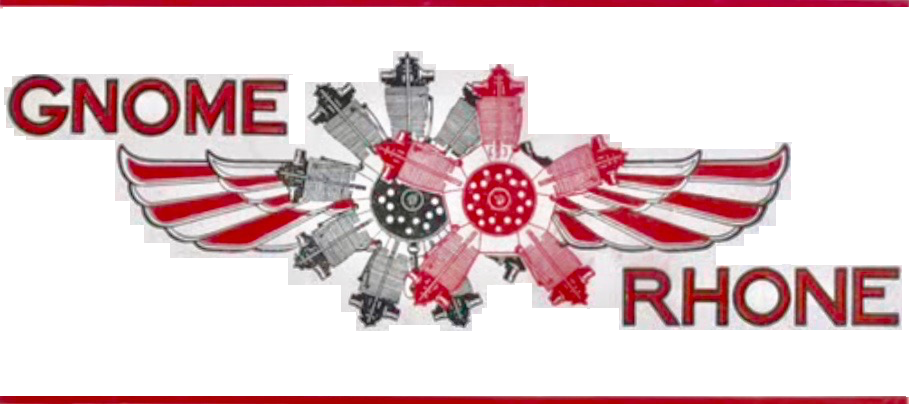 L’hélicoptère Nº2 was powered by a single Société des Moteurs Gnome et Rhône Type R nine-cylinder rotary engine placed vertically near the center of the structure.
L’hélicoptère Nº2 was powered by a single Société des Moteurs Gnome et Rhône Type R nine-cylinder rotary engine placed vertically near the center of the structure.
The Le Rhône Type R, introduced in 1917, was an air-cooled, normally-aspirated, 15.892 liter (969.786 cubic inches) nine-cylinder overhead valve rotary engine with two valves per cylinder. The Type R produced 170 cheval vapeur (167.7 horsepower) at 1,360 r.p.m. The engine was 0.990 meters (3 feet, 2.9 inches) long, 0.995 meters (3 feet, 3.2 inches) in diameter, and weighed 166 kilograms (366 pounds).
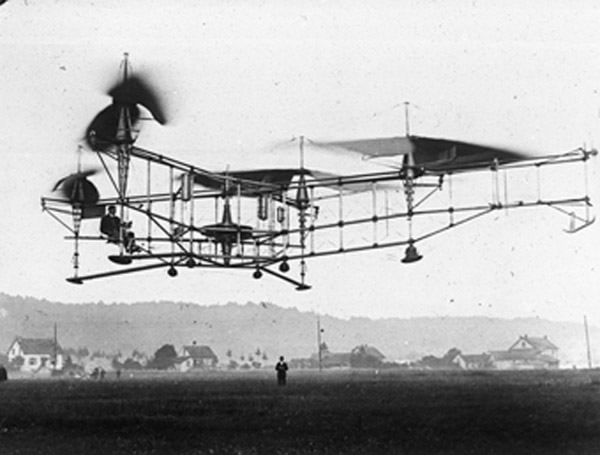
¹ FAI Record File Number 13093
² FAI Record File Number 13095
³ FAI Record Files 13091 (100 kilograms) and 13092 (200 kilograms)
© 2019, Bryan R. Swopes
Brian: I am currently preparing a book encouraging safe practices in the flight test arena. I would like to know the source of one of your P-51 (NA-73X) photos to obtain copyright permission. “North American Aviation, Inc.” is the attribution. I would appreciate any information you might be able to provide.
I am the person that sold the 1937 Ryan STA to Mr. Ryan who signed my log book and he then donated it to the museum. I will be 86 years old in July and I built a replica of it with a 6 foot wing span hanging in my 1300 sq, ft air condition garage in Phoenix Az. I would like you to have it if you would like it but at 86 we do not travel anymore and I am at a loss on how to get it to you. It is sliver with a little red trim as was mine and you guys made it all silver.
You are referring to the airplane in at the San Diego Air & Space Museum? It’s a beautiful little airplane, and it really is a wonderful example of the “spirit of aviation.” Did you want to donate the model to the Museum?
Hello Bryan,
You never cease to impress me with fascinating TDiA stories! They are all very well researched and with amazing photos. But this one….. this one is astounding and had me reaching for more info about this inventor. I’m wondering if Igor followed this man? Interesting that todays drones mimic this design.
Sometimes we don’t give the French enough credit for their ideas and leadership in early aviation, e.g. Octave Chanute who advised the Wright brothers a great deal.
Thanks again 👍
Thank you very much, Chris.